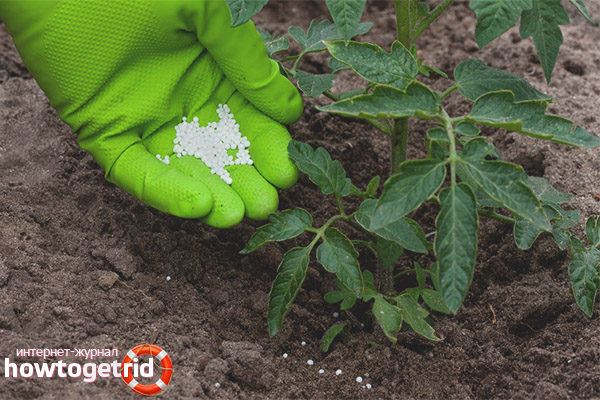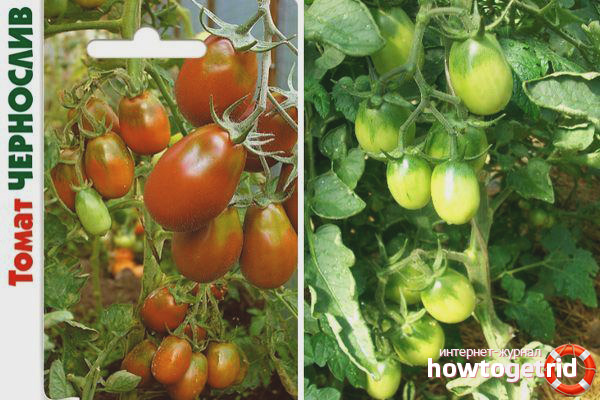The content of the article
Indeterminate tomato with beautiful and tasty fruits of unusual chocolate coloring. Fruit ripening occurs 110–120 days after germination. Fruits are uniform, elongated, plum-like. A simple brush, consisting of 6-8 tomatoes. The fruits of the Black Prince tomato are very sweet, have an elastic peel, and when ripe they turn brown.
Grade description
A variety of medium ripening. The growing season is 100-105 days. The tomato is relatively large, the average weight of the fruit is 150-200 g. Very productive, transportable. Bushes tolerate thickening well, plants can be placed 60 cm from each other, and in a row after 40 cm.
By the way, information for farmers and other agricultural groups that are cultivating their products by the industrial method - the harvest of fruits of this variety is harvested mechanically.
Pest control
Protection from sucking pests, spider mites and whiteflies is carried out using biological products. Entomophages, for example, macrolofus, are introduced into modern greenhouses in March. Macrolofus is a predatory bug that destroys tomato pests.
The fruits are suitable for fresh use and for pickling, characterized by excellent transportability. Tomatoes are tolerant to peronosporosis and viral diseases, satisfactorily tolerate a slight decrease in temperature at night.
Cultivation and care
- Tomato seedlings can be grown at home on the windowsill. Young plants are additionally illuminated with phytolamps. Shoots, as a rule, appear on the eighth day after sowing in the soil.
- Boxes, pots or containers before sowing seeds are treated with a 5% solution of potassium permanganate. Seeds are sown in grooves.
- Of particular importance is the picking of seedlings. This technique allows you to create a well-developed, branched root system.
- Before planting, it is recommended to introduce complex mineral fertilizers into the wells. Two weeks after planting in the ground, the bushes are mulched with hay or sawdust. For subsequent plant nutrition, organic fertilizers are used.
- A pick is made in the phase of three real leaves, after about 20 days from the appearance of seedlings. Plants are covered with polyethylene or glass. Tomatoes are transplanted into the open ground at the age of 45-50 days. When transplanting, seedlings are immersed in the holes along the leaves, thanks to this technique additional roots are formed on the stem.
- Tomatoes love heat, moderate humidity, calm weather. Prune variety is recommended to be tied to a support or trellis. Tying will reduce pressure on the main stem, and will allow all the energy of the bush to be directed to the growth and development of the fruit.
- When grown indoors, tomatoes form three trunks. When growing in open ground on one square meter, it is recommended to plant 2-3 bushes.
- The width of the beds for tomatoes should not exceed two meters. Prunes are planted in rows, followed by garters to the supports.
In gray areas, it is desirable to cover these heat-demanding plants with a film on the frame, at least at night. Coinage should not be neglected - the removal of young stepsons. Leave three to four main stems.
It is recommended to spud tomato bushes. After hilling and watering underground, roots will quickly begin to grow, and this will enhance the plant's nutrition.
Top dressing

Tomatoes must be regularly watered; in the early stages of development, feeding will not hinder.
- The rate of application of ammonium nitrate: matchbox on a bucket of water, distribute the solution to 8-10 plants.
- At the age of 30-40 days, seedlings are fed phosphorus (50-60 g of superphosphate per bucket of water). Fertilizer is applied with irrigation water, so you do not need to water the soil first.
- There is an opinion that when growth lags in tomatoes, you need to break off the lower leaves. On the contrary, in this case, the tomatoes simply stop growing.
Attention! Abundant fertilizing with nitrogen fertilizers can cause strong growth to the detriment of the crop.
Disease
Vascular bacteriosis of tomatoes is a dangerous disease. The causative agent is a bacterium from the genus Ervinium, which develops on almost all species of nightshade. The tips of the leaves rot away, the fruits soften.
Bacteria primarily affect physiologically weakened plants. Damage to plants by insect pests contributes to the development of the disease. The source of infection is plant debris and soil. Means of struggle - a solution of potassium permanganate.
Secrets of a bountiful harvest
It is recommended to regularly remove stepsons. If you leave them, then the fruiting will decrease, the tomatoes will become small.
Remove the bottom leaves, especially those that are located directly near the ground.
Fertilize every 6th watering of tomatoes.
Many summer residents seek to grow prune tomatoes. Love for these tomatoes is due to their delicate sugar flavor and abundant productivity.
10 mistakes when growing tomatoes










Submit